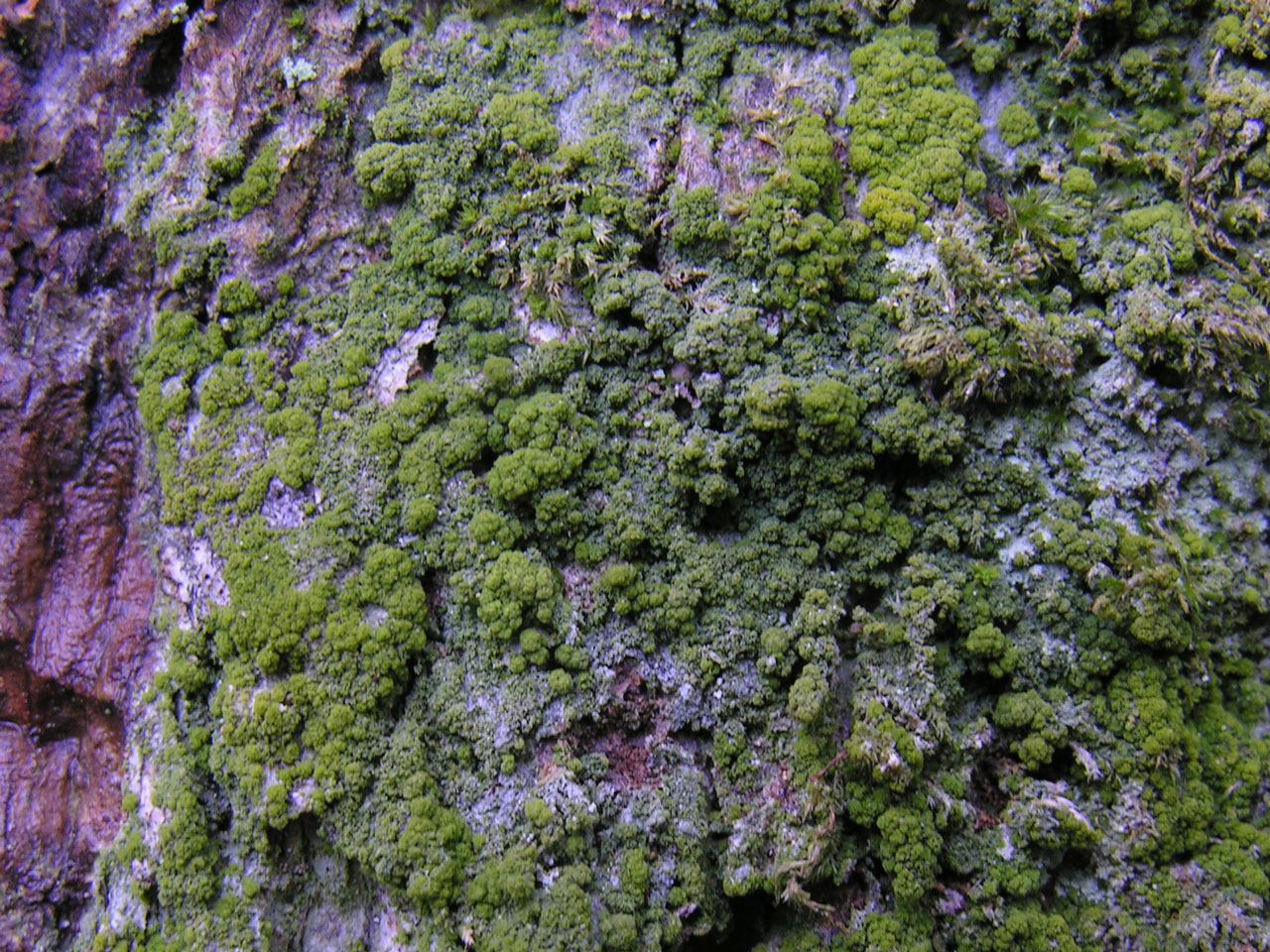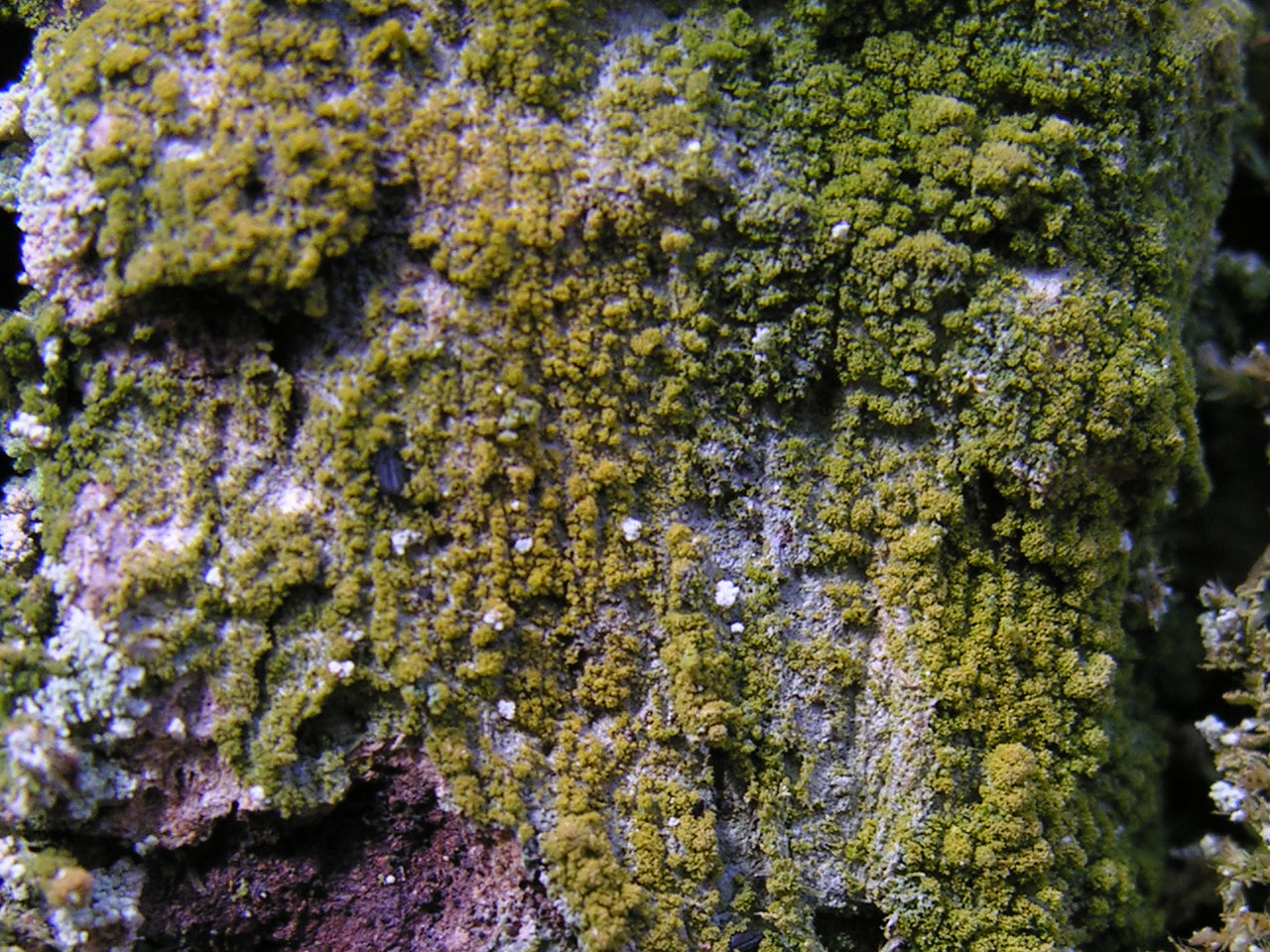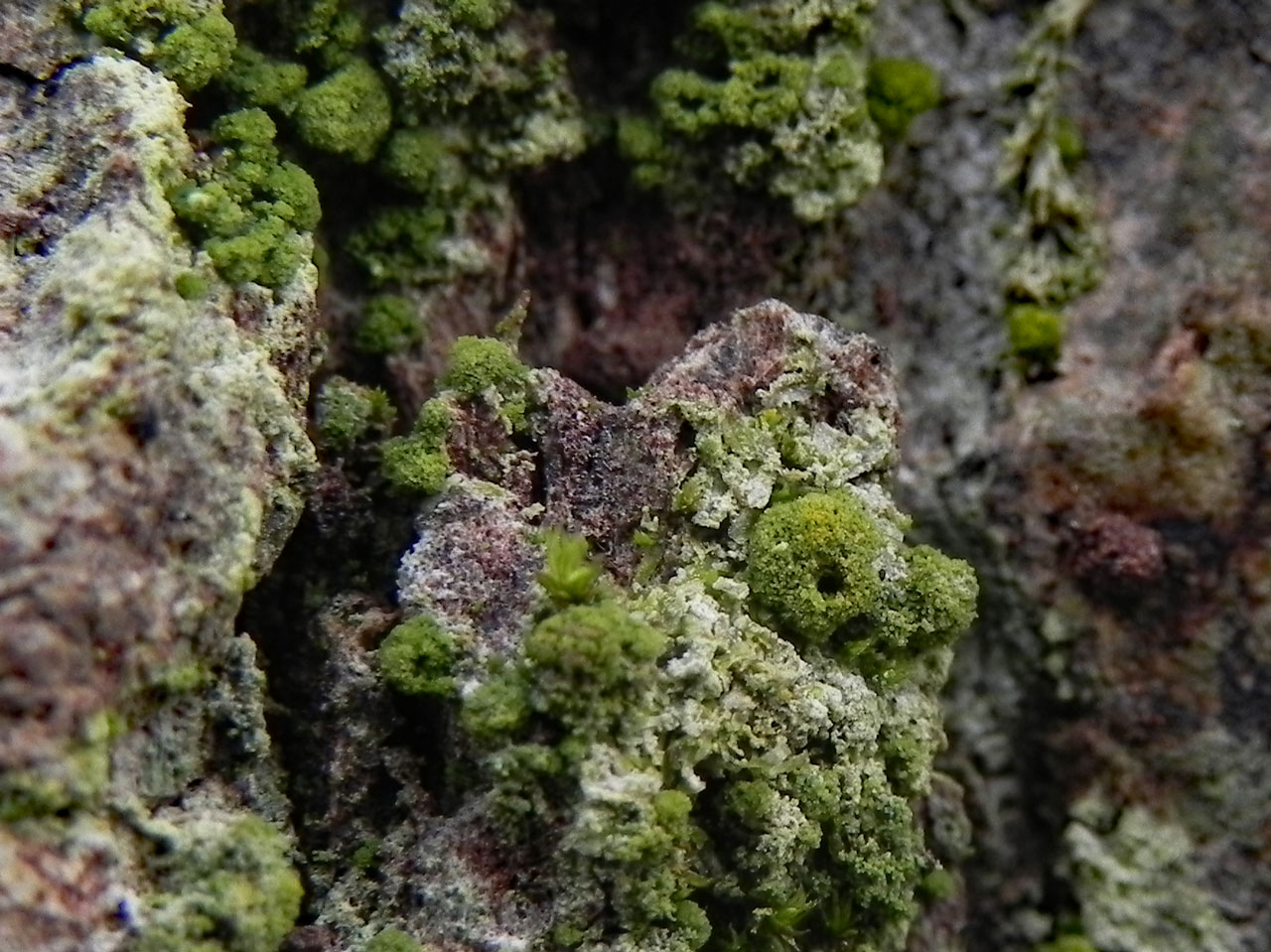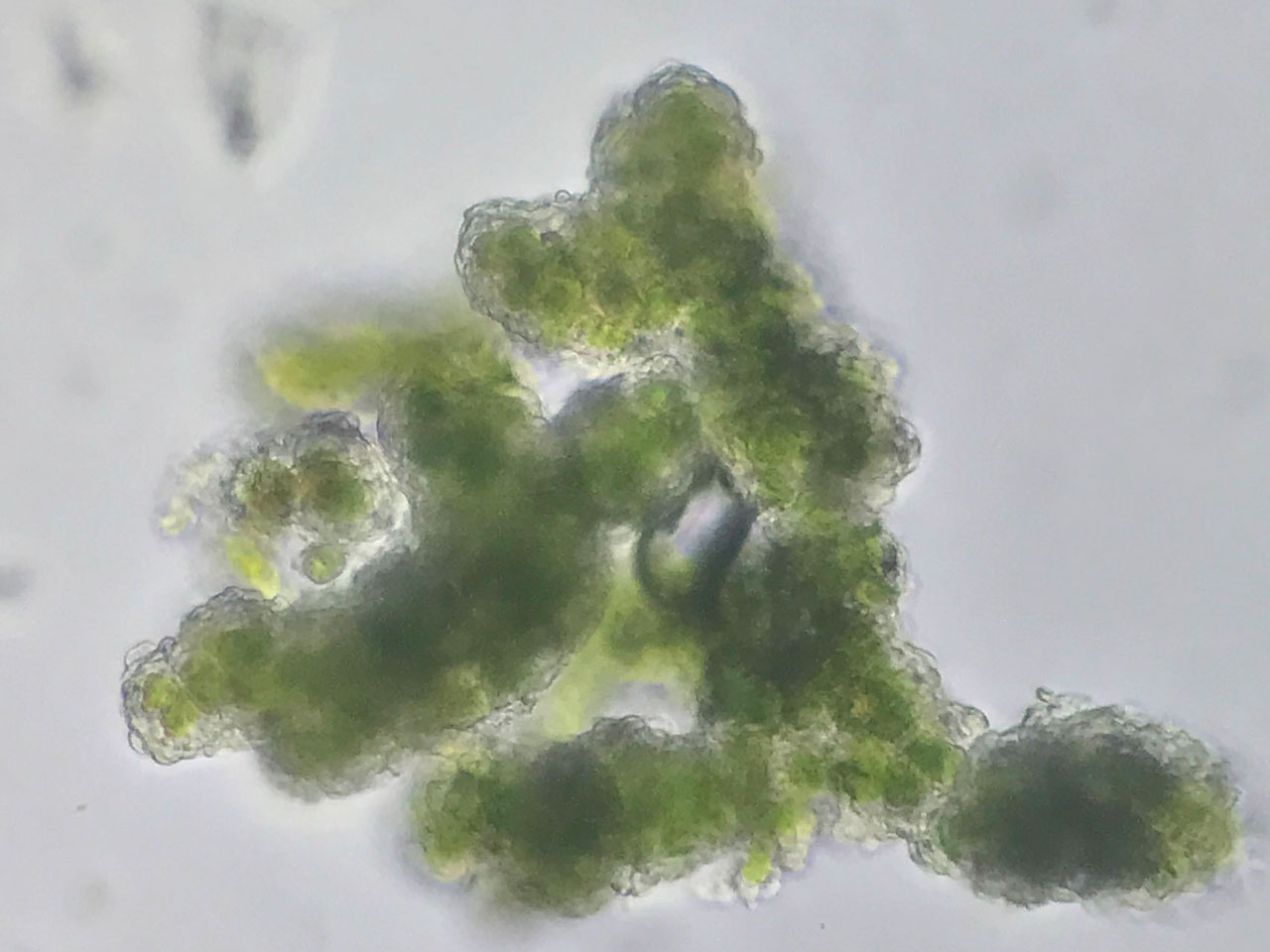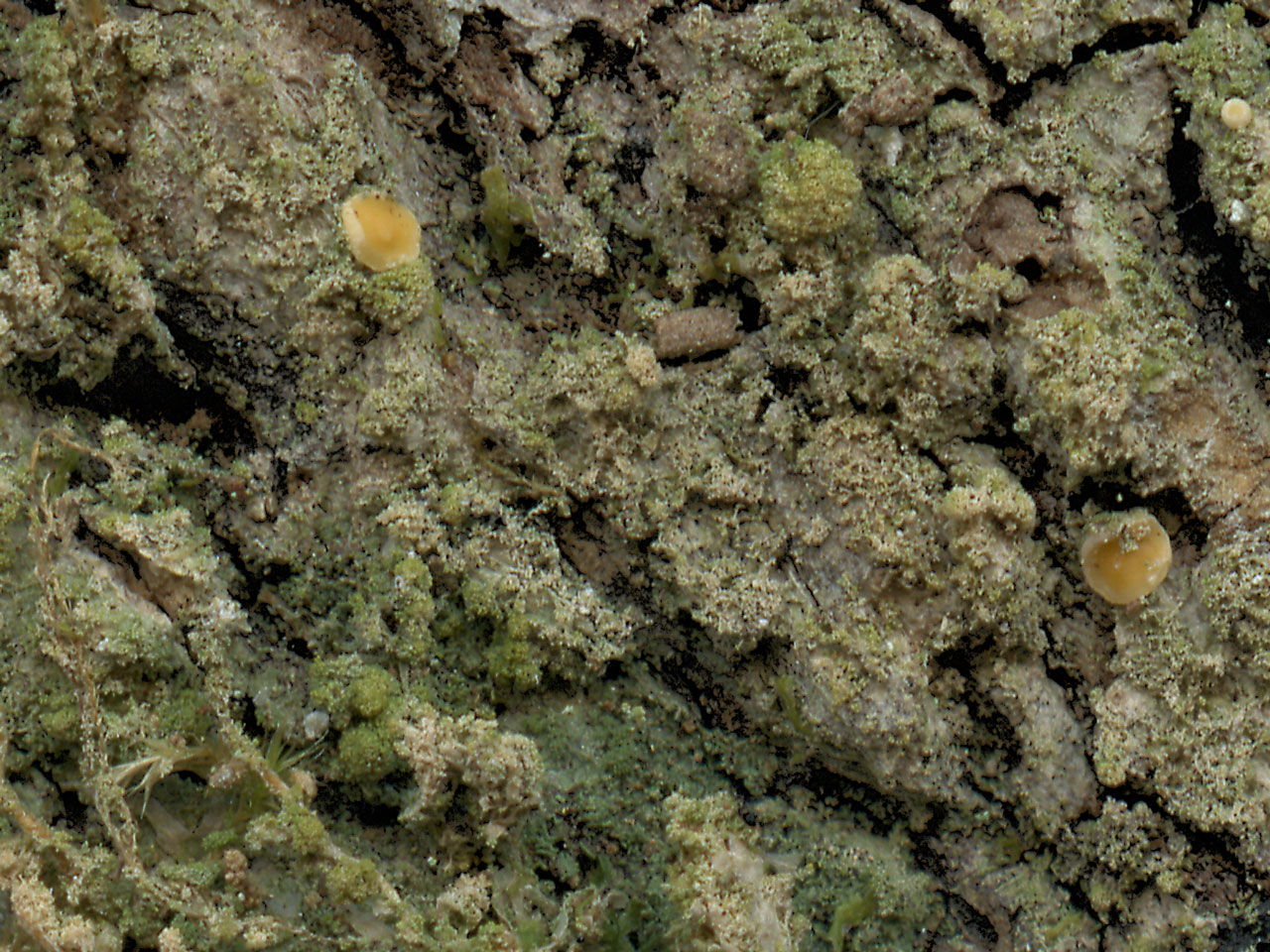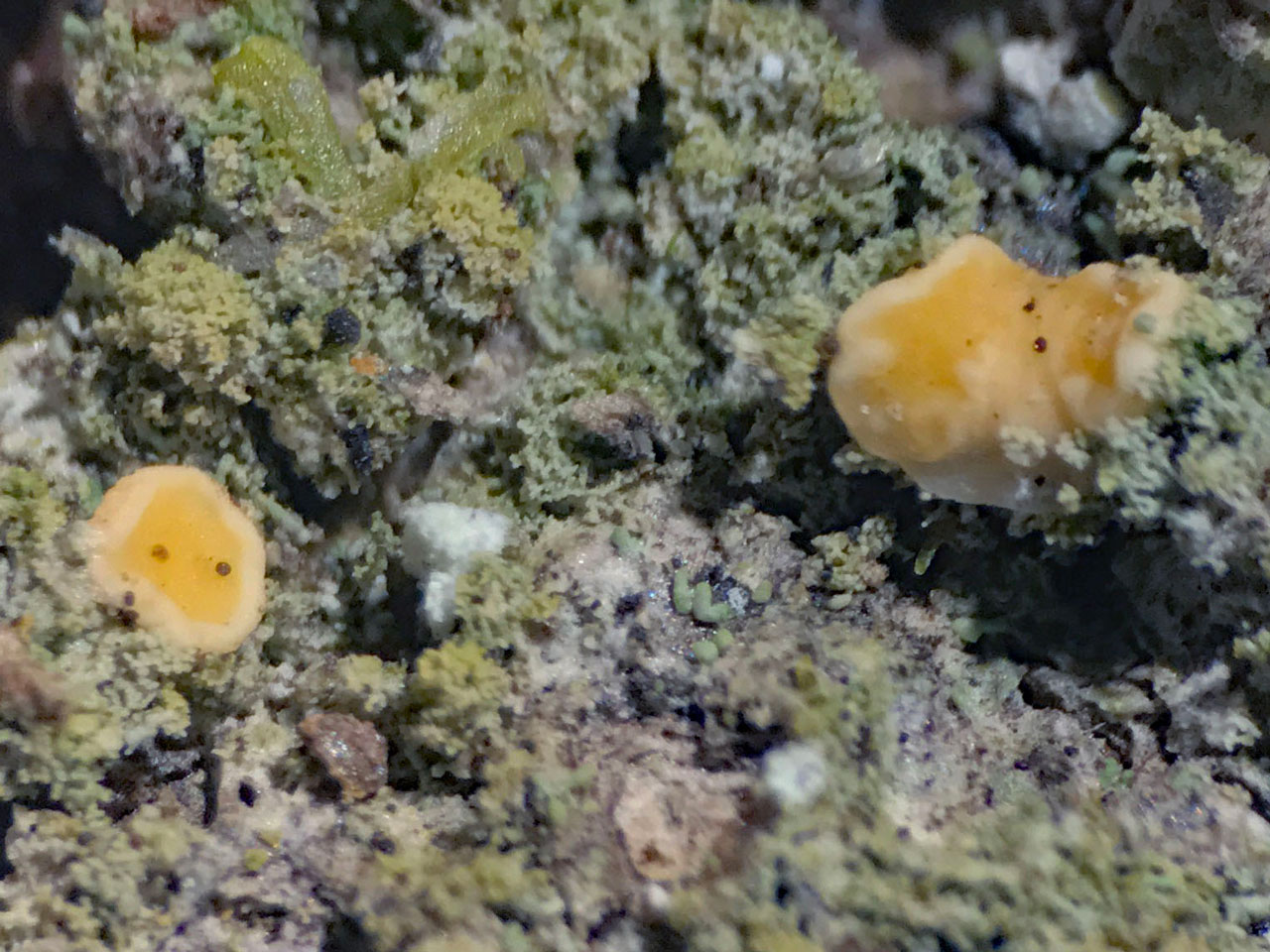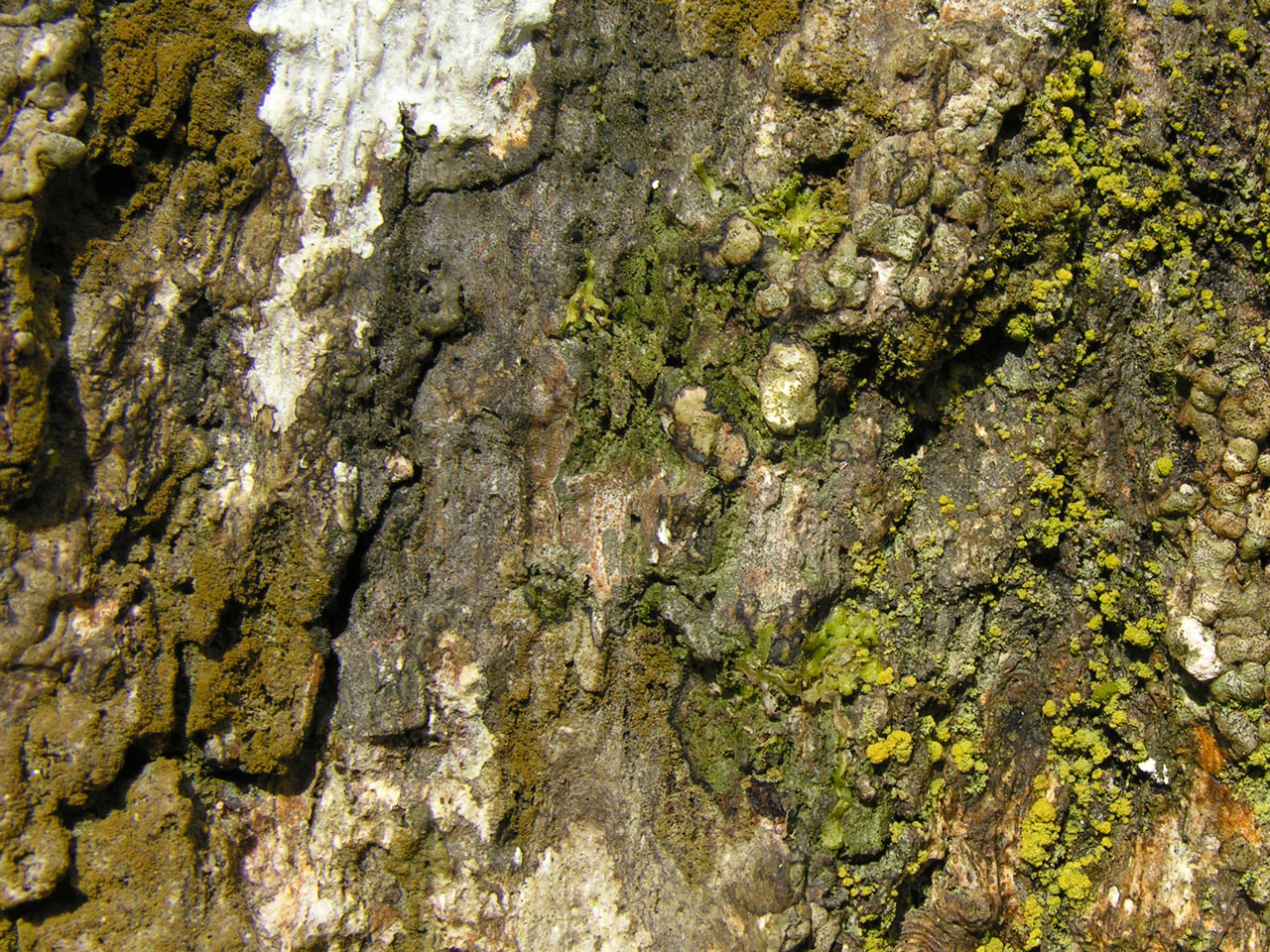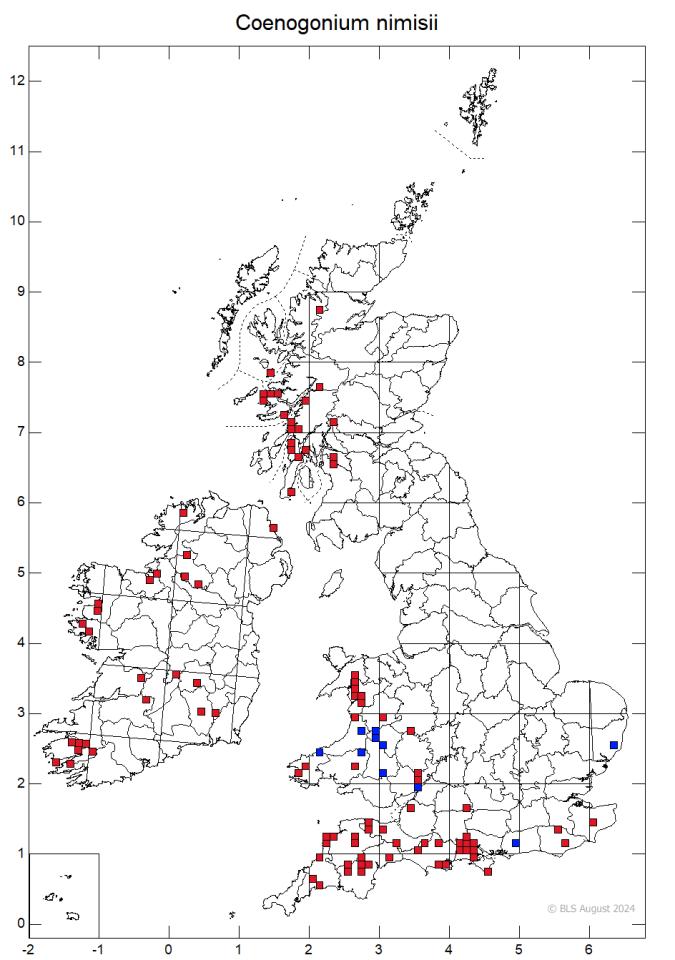This lichen has a remarkably close resemblance, at least when sterile, to the unrelated lichen Porina rosei, within which it was subsumed until its existence was revealed by sequencing. When fertile these species are very different; Coenogonium nimisii, with bight yellow disks similar to Coenogonium luteum and Porina rosei with dull orange perithecia part immersed in the thallus. Sterile, both have green to orange coralloid isidia which cluster into mounds of congested branches and grow in flushed base rich bark on veteran trees and sometimes on rock in humid habitats.
The isidia Porina rosei are more tightly packed, have a mat surface, are narrower (15–27 μm), have a loose clear cortex, with irregularly rounded sometimes slightly projecting cells, and usually containing only a single filament of the photobiont. In contrast those of of Coenogonium nimisii are are less crowded, have a shiny, not matt, surface, are wider (20 – 55 μm diam.), have a compact and smooth clear cortex, several cells thick, and with up to four algal strands. Both species have also been confused with P. hibernica but this is distinct in its short, wide and uniformly dull orange isidia.
Coenogonium nimisii is a widespread but local species of base rich bark on veteran tree in old woodlands in the west and south.
Thallus superficial, grey green to whitish, supporting abundant coralloid isidia, usually green, grading to pale ochre-orange where well lit, with a glossy surface, forming dense mounds away from the apothecia, more discrete near apothecia, 20–50 μm diam., with frequent constrictions and branching, with a compact clear cortex several cells thick surrounding up to four algal filaments. Apothecia 0.5–1.5 mm diam., sessile on the thallus (not when on isidia), distinctly constricted at the base, disc yellow-orange with pale creamy-yellow, often flexuose margins; hymenium 80–110 μm tall; paraphyses ca 1.5 μm diam., the apical cells to 4 μm diam. Ascus without an amyloid ring around the pore. Ascospores 9–11 × 2.5–3.0 μm. Pycnidia present but no data available.
Very rarely fertile and long overlooked as the similar looking but much rarer Porina rosei. True P. rosei is also often sterile, but is darker orange with matt, softer-looking isidial mounds with narrower isidia, up to 27 μm diam., and a thinner clear cortex of a single layer of irregular rounded cells surrounding a single algal filament. C. nimisii is very similar to the New Zealand species C. fruticulosum (Ludwig 2014), except based on limited fertile material available, the hymenium is taller and the isidia appear more densely packed in the European species. It does not resemble any of the other varied tropical and austral isidiate Coenogonium species; see Aptroot & Cáceres (2018).
Enterographa brezhonega is occasionally parasitic on C. nimisii and rarely on C. luteum, and could be easily mistaken as myxomycete fruit-bodies or blobs of Lepraria; however, if looked at closely the convoluted white lirellae are highly distinctive.
On a wide range of veteran tree species with base-rich bark as well as on mossy rocks, in ancient woodland. Typically found in sheltered humid locations in old growth woodlands.

Widespread but local. S.W. England, Wales, S.W. Highlands, Ireland.
Not assessed, the dominance of Coenogonium nimisii in the aggregate records of Porina rosei and C. nimisii combined under Porina rosei previously, however, means the Near Threatened status applied to the name P. rosei in the 2012 assessment should probably be inherited by C. nimisii not P. rosei. The main threat to this species is increasing shade with woodlands due to removal or declines in woodland grazing with pasture woodland habitats.
Britain: Near Threatened, International Responsibility Species
Aptroot, A, & Cáceres, M. E. S. (2018) Coenogonium upretianum (Ascomycota: Coenogoniaceae), a new corticolous lichen species from Brazil. Cryptogam Biodiversity and Assessment. 2456-0251: 11-13.
Cannon, P., Malíček, J., Sanderson, N., Benfield, B., Coppins, B. & Simkin, J. (2021). Ostropales: Coenogoniaceae, including the genus Coenogonium. Revisions of British and Irish Lichens 3: 1-4.
Ludwig, L. R. (2014) Coenogonium fruticulosum, a new isidiate species from New Zealand. Australasian Lichenology 75: 18-27.
Text by N A Sanderson, based Cannon et al (2021).
